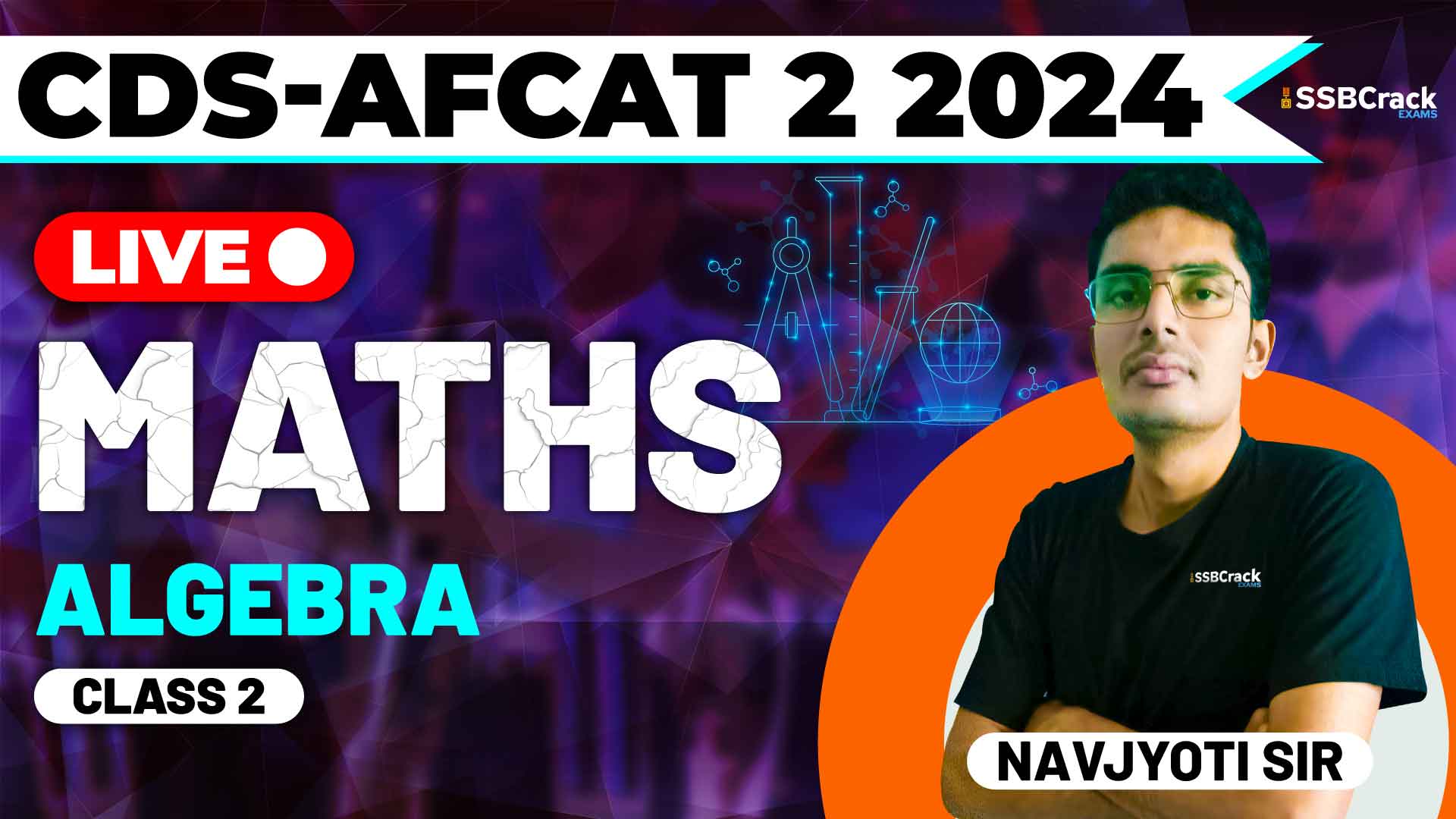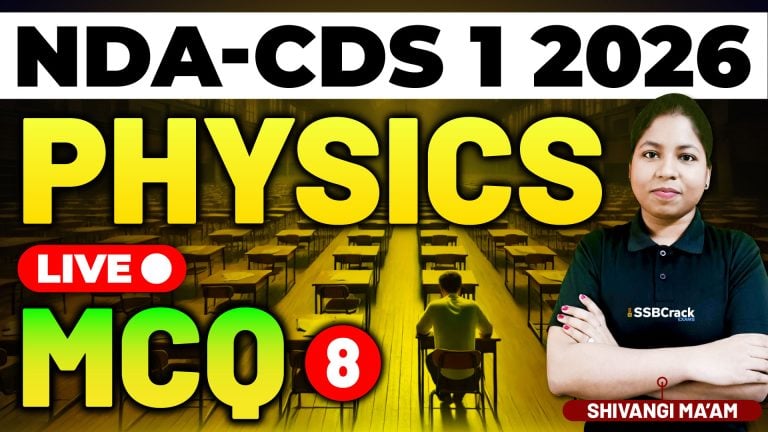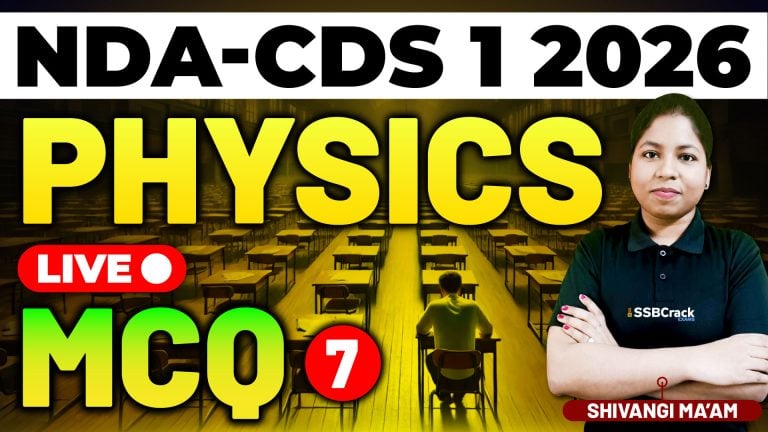Algebra is a fundamental component of mathematics and a crucial topic for competitive exams like the Combined Defence Services (CDS) and Air Force Common Admission Test (AFCAT). A recent class dedicated to algebra covered essential sub-topics, including simultaneous equations, quadratic equations, the discriminant, the quadratic formula, and the relationship between roots and coefficients. This article highlights the key concepts discussed in the class and emphasizes the importance of practicing multiple-choice questions (MCQs) to excel in these exams.
1. Simultaneous Equations and Solutions
Simultaneous equations are sets of equations with multiple variables. The goal is to find the values of these variables that satisfy all equations in the set.
Key Points:
- Definition: A system of equations that are solved together.
- Methods: Common methods for solving include substitution, elimination, and graphical methods.
- Applications: Used to solve real-world problems where multiple conditions must be met simultaneously.
2. Quadratic Equations
Quadratic equations are polynomial equations of the second degree. They are commonly represented in the form (ax2 + bx + c = 0), where (a), (b), and (c) are constants.
Key Points:
- Definition: An equation where the highest exponent of the variable is 2.
- Solutions: The solutions to a quadratic equation are known as the roots, which can be found using various methods including factorization, completing the square, and the quadratic formula.
Discriminant
The discriminant is a component of the quadratic formula that provides important information about the nature of the roots of a quadratic equation.
Key Points:
- Definition: The part of the quadratic formula under the square root sign, represented as (b^2 – 4ac).
- Interpretation: The value of the discriminant indicates the nature of the roots:
- If positive, there are two distinct real roots.
- If zero, there is exactly one real root (repeated).
- If negative, there are no real roots (the roots are complex).
Quadratic Formula
The quadratic formula provides a direct method for finding the roots of a quadratic equation.
Relation Between Roots and Coefficients
There is a direct relationship between the roots of a quadratic equation and its coefficients.
Key Points:
- Sum of Roots: The sum of the roots of (ax^2 + bx + c = 0) is (-b/a).
- Product of Roots: The product of the roots is (c/a).
- Applications: These relationships are useful for quickly determining characteristics of the roots without solving the equation explicitly.
Importance of Practicing MCQs
Practicing multiple-choice questions (MCQs) is essential for mastering algebra and performing well in CDS and AFCAT exams. MCQs help reinforce theoretical knowledge and develop problem-solving skills. Here are some benefits of practicing MCQs:
- Concept Reinforcement: MCQs require you to apply algebraic concepts, which helps reinforce your understanding.
- Variety of Problems: Exposure to different types of questions enhances your ability to tackle various problem scenarios.
- Time Management: Regular practice improves your ability to solve problems quickly and efficiently.
- Confidence Building: Familiarity with question patterns and consistent practice builds confidence.
Example MCQs
Here are some example MCQs similar to those discussed in the class, along with their solutions:
Example 1: Simultaneous Equations
Question: Solve the system of equations: (2x + 3y = 6) and (x – y = 2).
Solution:
- Use either substitution or elimination to find the values of (x) and (y).
Answer: (x = 3), (y = 0).
Example 2: Quadratic Equations
Question: Find the roots of the quadratic equation (x2 – 5x + 6 = 0).
Solution:
- Factorize the equation or use the quadratic formula to find the roots.
Answer: The roots are (x = 2) and (x = 3).
Example 3: Discriminant
Question: Determine the nature of the roots of the equation (x2 + 4x + 5 = 0).
Solution:
- Calculate the discriminant ((b2 – 4ac)).
Answer: The discriminant is negative, so the equation has no real roots (the roots are complex).
Example 4: Relation Between Roots and Coefficients
Question: If the roots of the quadratic equation (2x2 + 3x + k = 0) are in the ratio 2:3, find the value of (k).
Solution:
- Use the relationships between the roots and the coefficients to find (k).
Answer: (k = 1.5).
Strategies for Solving Algebra Problems
To excel in solving algebra problems, adopt the following strategies:
- Memorize Key Formulas and Identities: Ensure you know the common algebraic identities and formulas.
- Understand the Problem: Carefully read the question to identify what is being asked and the relevant concepts.
- Practice Regularly: Regular practice with a variety of problems helps in retaining the concepts and improving problem-solving speed.
- Double-Check Calculations: Always double-check your calculations to avoid simple errors.
- Use Reliable Resources: Utilize reputable study materials and online resources that offer a variety of practice questions and detailed explanations.
Tips for Effective Preparation
- Consistent Practice: Solve a wide range of MCQs from different sources to familiarize yourself with various question types.
- Mock Tests: Take timed mock tests to simulate the actual exam environment and enhance your time management skills.
- Review Mistakes: Analyze mistakes made during practice or tests to understand where you went wrong and how to correct it.
- Engage with Study Groups: Discussing problems with peers can provide new insights and problem-solving techniques.
- Stay Updated: Keep up with any changes in the exam pattern or syllabus to ensure your preparation is on track.
Conclusion
Algebra is a vital topic for the CDS and AFCAT exams, requiring a solid understanding of various concepts and the ability to apply them effectively. The recent class on algebra provided a comprehensive overview of key topics such as simultaneous equations, quadratic equations, the discriminant, the quadratic formula, and the relationship between roots and coefficients, focusing on practical problem-solving through extensive discussion of important MCQs.
By understanding the concepts, memorizing key formulas and identities, practicing regularly, and employing strategic problem-solving approaches, students can master algebra and excel in their exams. Regular practice and a strategic approach to problem-solving will ensure that you are well-prepared to tackle any algebra questions that come your way. Stay focused, practice diligently, and approach each problem with confidence. Good luck!


















